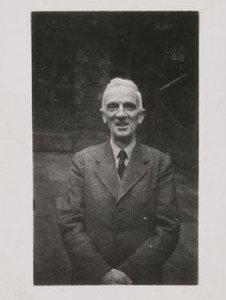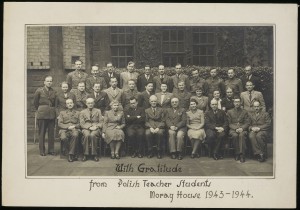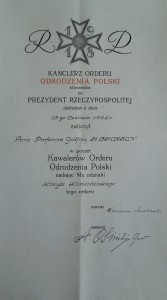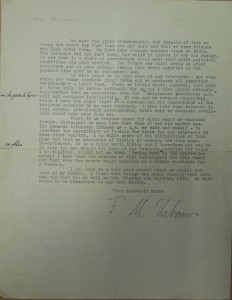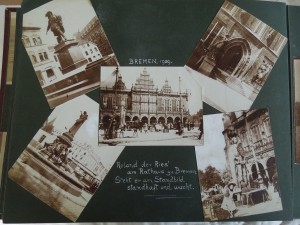My favourite item from all the collections I have worked with in the past 10 months is a beautiful album in the Moray House collection. The album was made for Thomson by the ‘Polish Students in Uniform’. This initiative was likely very similar to the Polish School of Medicine, set up in the University of Edinburgh during World War II with the aim of training Polish students and doctors in the armed forces (almost immediately, civilian students too were accepted). Students were trained in Polish, and could obtain Polish degrees.
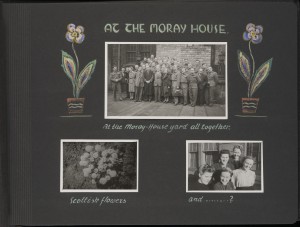
Images from an album gifted to Thomson by the ‘Polish Students in Uniform’, Moray House archive (notice the ‘Scottish flowers’ on the left!)
The album itself is a beautiful object – the colours, the drawings, even the positioning of the photographs. For me, however, what really makes this object wonderful is the informality of it, the spontaneous photographs and the witty captions combine to make it, in contrast to the formal staff and student photographs, a real snapshot of life at Moray House as the students knew it.
Following German and Soviet occupation, hundreds of thousands of Polish people were deported from their home country – many of the students trained at the Polish School of Medicine would never return. At such a time of sadness, upheaval, and uncertainty for the students, it is wonderful that, nonetheless, they took the time to thank Thomson for his kindness in such a thoughtful way.
It is likely that Thomson’s work with the ‘Polish Students in Uniform’ is the reason that, on the 13th June, 1944, he was awarded the declaration of the Third Class of the Order of Polonia Restituta. The order was conferred by the President of the Polish republic in recognition of his services to Polish interests during the war. The geneticist Francis Crew also had the award bestowed on him.
Roughly translated, the Polonia Restituta is ‘Order of Rebirth of Poland‘. It is generally awarded, and has been since 1921, for outstanding contributions to education, science, sport, culture, art, economics, national defence, social work, civil service or diplomacy. The vast majority of those awarded are naturally given to Polish nationals. Thomson’s award also came along with a letter from Anthony Eden (well, at least his secretary!) and an honorary membership card for the Association of Polish Teachers in Great Britain.

Letter from Sir Anthony Eden confirming that King George has given his permission for Thomson to wear the cross
Thomson has often proved an illusive character to those researching his history – in oral testimonies from those he worked with or who studied under he has in turn been described as reserved, friendly, quick tempered, even tempered, etc.! But objects such as the photograph album, as well as the many letters sent to Thomson’s widow by his students, show that his students were very much at the heart of what he did.
With many thanks to Ela Wiklo for information about the Polonia Restituta.


